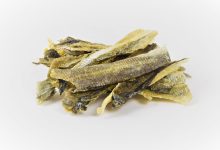Unveiling the Mysteries of the Hydra: Nature’s Fascinating Organism

Introduction
Beneath the tranquil surface of freshwater habitats lies a creature that has fascinated scientists for centuries—the Hydra. This seemingly simple organism belongs to the phylum Cnidaria and possesses remarkable regenerative abilities, longevity, and predatory prowess. Despite its small size and unassuming appearance, the Hydra offers valuable insights into fundamental biological processes and has captured the imagination of researchers and nature enthusiasts alike. In this article, we delve into the intriguing world of the Hydra, exploring its anatomy, life cycle, behavior, and the scientific discoveries it has inspired.
Anatomy of a Hydra
The Hydra is a small, freshwater organism characterized by its tubular body and tentacles surrounding a central mouth opening. Typically ranging from a few millimeters to a few centimeters in length, Hydras exhibit a simple body plan comprised of two main cell layers: the outer ectoderm and the inner endoderm. Sandwiched between these layers is a jelly-like substance called the mesoglea, which provides structural support.
At one end of the Hydra’s body is a basal disk, which anchors the organism to substrates such as rocks, plants, or debris. From this base, the Hydra extends its body column, topped with a ring of tentacles that capture prey and aid in feeding. The tentacles are equipped with specialized stinging cells called cnidocytes, which contain nematocysts—tiny, harpoon-like structures used to inject toxins into prey or deter predators.
Life Cycle and Reproduction
The life cycle of a Hydra is characterized by its remarkable ability to regenerate and reproduce asexually. Hydras reproduce primarily through budding, a process whereby new individuals form as outgrowths from the parent’s body column. These buds eventually develop into fully functional Hydras, which detach and begin independent lives.
Additionally, Hydras can reproduce sexually under certain conditions. During sexual reproduction, male and female reproductive cells, or gametes, are released into the water. Fertilization occurs externally, resulting in the formation of zygotes that develop into larvae. These larvae eventually settle and metamorphose into juvenile Hydras, completing the life cycle.
Regeneration and Immortality
One of the most remarkable aspects of the Hydra is its ability to regenerate lost body parts—an ability that has earned it the title of “immortal organism” among scientists. When a Hydra is cut into multiple pieces, each fragment has the potential to regenerate into a complete, fully functional organism. This regenerative capacity is attributed to the presence of stem cells, which are undifferentiated cells capable of differentiating into various cell types.
Studies have revealed that the Hydra’s stem cells, located in its body column, possess remarkable plasticity and can give rise to any cell type needed for regeneration. This remarkable regenerative ability not only allows the Hydra to recover from injuries but also plays a crucial role in its longevity, as it continuously renews its tissues throughout its life.
Predatory Behavior and Feeding
Despite its simple body plan, the Hydra is a voracious predator capable of capturing and consuming a variety of small aquatic organisms. Using its tentacles armed with stinging cells, the Hydra immobilizes prey and delivers paralyzing toxins, facilitating ingestion through its central mouth opening. Once captured, prey items are engulfed whole and digested within the Hydra’s gastrovascular cavity—a sac-like structure with a single opening serving as both mouth and anus.
The Hydra’s feeding behavior is not only essential for obtaining nutrients but also influences its ecological role within freshwater ecosystems. As both predator and prey, Hydras contribute to the balance of aquatic food webs, exerting control over populations of smaller organisms while serving as a food source for larger predators.
Scientific Significance and Research Applications
Beyond its intrinsic biological interest, the Hydra holds significant value as a model organism for scientific research. Its simple anatomy, rapid reproduction, and regenerative abilities make it an ideal subject for studying fundamental biological processes, including development, stem cell biology, and aging.
Researchers have leveraged the Hydra as a model system to investigate topics ranging from tissue regeneration and morphogenesis to neurobiology and aging. Insights gained from studying the Hydra have implications for human health and regenerative medicine, offering potential strategies for tissue repair and combating age-related degenerative conditions.
Moreover, the Hydra’s unique properties have inspired innovations in fields such as biomaterials and robotics. By mimicking the Hydra regenerative capabilities and adaptive behaviors, scientists aim to develop novel materials and technologies with applications in medicine, engineering, and beyond.
Conclusion
The Hydra may appear as a humble inhabitant of freshwater ecosystems, but its biological complexity and adaptive abilities have captivated the scientific community for centuries. From its remarkable regenerative powers to its predatory prowess, the Hydra offers valuable insights into the mechanisms of life and evolution. As researchers continue to unravel the mysteries of this enigmatic organism, the Hydra remains a symbol of nature’s ingenuity and resilience—a testament to the wonders that lie beneath the surface of our world.








